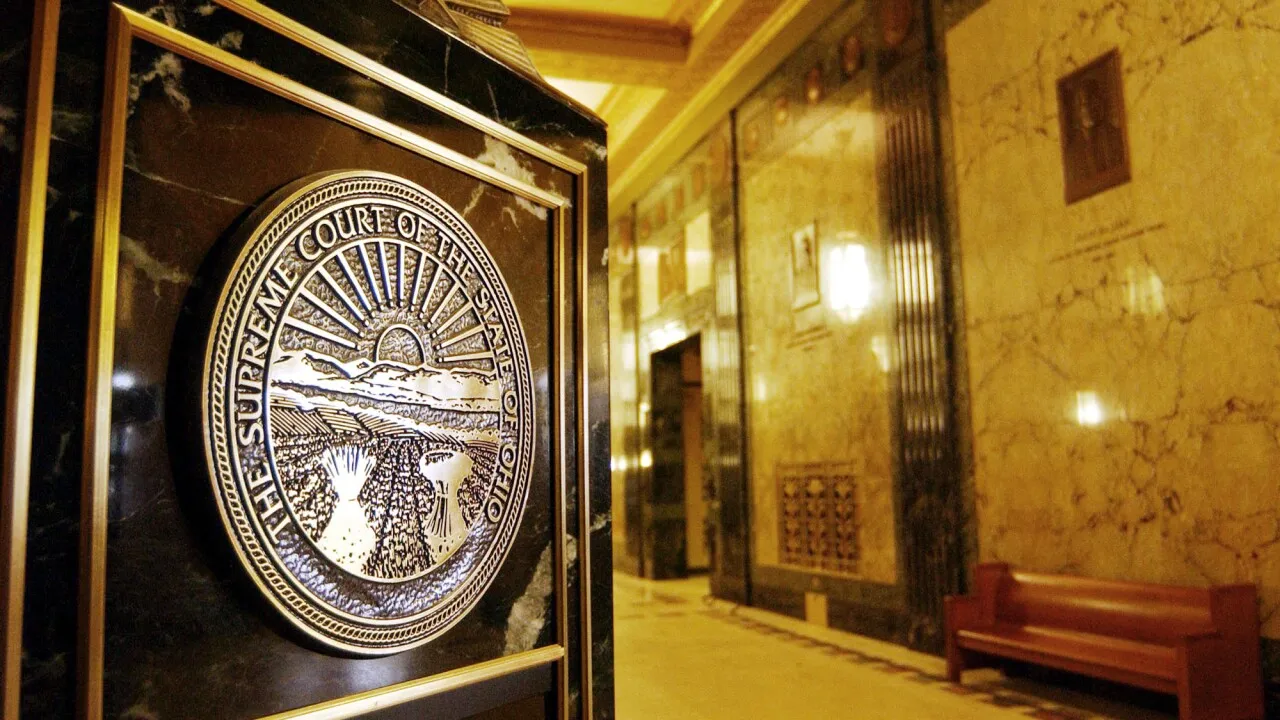Politics

Politics
Trump and Zelensky: A Diplomatic Dance on the Edge of Peace in Ukraine
Washington — In the White House, where diplomacy often turns into a high-class theater, President Donald Trump and his Ukrainian counterpart Volodymyr Zelensky held talks that could become a turning point in the protracted war in Europe. With smiles on their faces and compliments on their lips, the leaders discussed security guarantees, territorial compromises, and a potential meeting with Vladimir Putin—all against the backdrop of European allies who arrived to support Kyiv's position. But behind the facade of politeness lie deep disagreements, which, according to insiders from the White House, could either accelerate peace or return the conflict to even greater chaos.We can say: these negotiations resemble the classic Trump style — brilliant promises, avoidance of details, and emphasis on personal relationships. Unlike the failed February meeting, when Trump publicly reproached Zelensky for lack of “cards” in his hand, this time the atmosphere was unexpectedly constructive. Trump, known for his love of flattery, did not hold back: “I can’t believe it — I like it,” he said, commenting on Zelensky’s appearance, who this time chose a strict suit instead of an informal sweater. According to my sources in diplomatic circles, this advice to Zelensky was given by British Prime Minister Rishi Sunak, emphasizing the importance of gratitude and etiquette — a lesson the Ukrainian leader learned brilliantly, uttering “thank you” 16 times during the introductory part.But behind these superficial gestures lies a real game. Insiders from the State Department reveal that the Ukrainian delegation arrived with a clear task: to investigate the details of Trump’s secret meeting with Putin in Anchorage. There, according to sources close to the negotiations, Putin insisted on full control over four occupied regions — Donetsk, Luhansk, Kherson, and Zaporizhzhia — claiming that Russian forces could seize the rest of Donetsk oblast by October. Americans, looking at maps, tend to believe these threats, but the reality on the battlefield is different: Russian troops have not been able to breach Ukrainian defenses in key areas such as Kramatorsk and Sloviansk for over ten years. These cities are not just points on a map, but strategic fortresses, behind which lies a route to Kharkiv. According to Ukrainian military analysts, Russian losses near Bakhmut — at least 20,000 killed — make any advance suicidal.Supported by European leaders such as Georgia Meloni from Italy and Alexander Stubba from Finland, Zelensky brought his "cards" to Washington — and they proved convincing. The first: unanimous European solidarity, positioning Ukraine as a shield for the entire continent. “Peace in Ukraine — is peace in Europe,” — emphasized Zelensky, and according to my sources, Trump could not ignore this argument, especially considering his skepticism about NATO. The second card — Kyiv’s military successes, including the “Spiderweb” operation, which destroyed a significant part of Russian strategic aviation, and the recent elimination of a breakthrough near Dobropole. The third, and perhaps most powerful, — the launch of serial production of the "Flamingo" cruise missile, which, according to technical specifications, surpasses Russian "Caliber" missiles and can reach Moscow or St. Petersburg. And finally, the tragic “card” presented by Russia itself: the nighttime attack on Kharkiv, Odesa, and Sumy, where a one-and-a-half-year-old child was killed — an act that shattered Putin's image as a potential peacemaker in Trump’s eyes.Trump promised security guarantees for Ukraine — from Europe, but “in coordination” with the US. According to my contacts in the Pentagon, this could mean intelligence sharing, logistics support, and even air patrols over the Black Sea, but not the deployment of American troops. “All,” — Zelensky succinctly responded to the question about desired guarantees, emphasizing the need for a strong army and commitments from “great countries.” Insiders say that Trump, who previously relied on economic agreements regarding rare earth metals as a deterrent, is now forced to reconsider his stance under European pressure. Final proposals are expected within 10 days, and they could become an NATO Article 5 analog — an attack on Ukraine as an attack on allies.The ceasefire, which Trump previously promoted as a quick solution, has now taken a back seat. “We can reach a peace agreement while they are fighting,” — Trump stated, acknowledging Putin’s arguments about the risks of a pause without clear conditions. Zelensky, in turn, is ready for a compromise: “Without any conditions, we must meet.” The most intriguing moment — preparations for a leaders’ summit. Trump telephoned Putin during the summit and announced the start of planning. Zelensky confirmed his readiness for a bilateral or trilateral format, but the Kremlin, through Yuri Ushakov, remained cautious, only talking about “raising the level of representatives.” German Chancellor Friedrich Merz suggested the meeting could happen in two weeks but added: “Whether Putin has the courage to come — we do not know.”In the sidelines, Trump, forgetting about the microphone, shared with Europeans: “I think he wants to make a deal. No matter how crazy that sounds.” These words, heard by my colleagues, highlight Trump’s optimism — but also the risks. From my experience, such negotiations often end not with peace but with a new wave of tensions. Will this meeting bring us closer to peace, or is it just an illusion? The answer depends on whether leaders find common ground behind closed doors — and whether they are willing to pay the price for a genuine compromise.
19.08.2025

Politics
Trump and Zelensky: Dramatic Meeting at the White House Where Europe's Future Will Be Decided
In the luxurious walls of the White House, where history often writes its most complex chapters, the President of Ukraine Volodymyr Zelenskyy met with U.S. President Donald Trump on Monday, August 18, attempting to persuade the American leader of the necessity of firm support for Kyiv against Russian aggression. This meeting, taking place against the backdrop of fresh bloody attacks by Moscow on Ukrainian cities, highlighted deep disagreements on the path to peace: Trump, relying on his recent negotiations with Vladimir Putin, insists on territorial concessions from Ukraine, while Zelenskyy, backed by a coalition of European leaders, calls for joint pressure on the Kremlin to force Russia to retreat.
We have seen many diplomatic dramas—from the Cold War to modern geopolitical crises. Insider sources in the White House hint that Trump sees this meeting as an opportunity for a quick “big deal,” similar to those he promoted in business, but with risks to Ukraine’s sovereignty. His warm reception of Zelenskyy on the porch—an gesture reminiscent of old Hollywood films—contrasts with the heated discussion during their previous meeting in 2019, which led to Trump's impeachment over the Ukraine scandal. Today, however, the atmosphere seems more conciliatory: Zelenskyy delivered a letter to Melania Trump, and the press conference proceeded without scandals, with smiles and handshakes.
Answering journalists’ questions, Trump reaffirmed his previous statements that Zelenskyy “can end the war immediately if he wants.” “It’s true,” he said, adding that he plans a tripartite meeting with Russia, Ukraine, and the U.S., where there is “a good chance” of progress. He also mentioned his “very good” conversation with Putin in Alaska last week, where, according to sources close to negotiations, Trump rejected the idea of a ceasefire as a precondition for peace, instead proposing an “exchange of territories.” Specifically, Trump publicly advised Ukraine to abandon claims to Crimea and NATO membership—conditions Moscow has long demanded.
Meanwhile, Zelenskyy responded with compelling restraint, emphasizing that the war must be ended by Russia itself. “We hope that joint strength with America and European friends will force Russia to true peace,” he said, emphasizing the need for pressure rather than concessions. These words reflect deep concern in Kyiv: insiders from the Ukrainian government, with whom I spoke, fear that Trump, seeking a quick victory for his second term, might sacrifice Ukrainian interests for a deal with Putin. After the Alaska summit, Trump promised to “drive the peace process to the end, despite all my flippant and very jealous critics.”
Adding weight to this meeting, Zelenskyy did not arrive alone: alongside him in Washington were key European leaders—the United Kingdom’s Prime Minister Kír Starmer, German Chancellor Friedrich Merz, Italian Prime Minister Giorgia Meloni, Finnish President Sauli Niinistö, French President Emmanuel Macron, European Commission President Ursula von der Leyen, and NATO Secretary General Jens Stoltenberg. Before negotiations with Trump, Zelenskyy held consultations with some of these leaders, forming a united front. An extended discussion format is scheduled for later, after bilateral talks, where Europeans are likely to press Trump on security guarantees for Ukraine. According to American press reports, Trump, who previously refused such commitments, now considers supporting a “Coalition of the Willing”—European forces with American reinforcement.
This diplomatic carousel unfolds amid escalating violence: on the night before Monday, Russia struck Kharkiv, Zaporizhzhia, and Sumy, killing at least 10 people, including two children. Zelenskyy called these attacks “cynical,” aimed at undermining negotiations, and urged not to reward the aggressor. European leaders, like Macron, warned that weakness before Putin could provoke new conflicts in Europe.
In the White House corridors, whispers circulate that Trump plans to call Putin immediately after the meeting to “seal the deal.” But will this lead to genuine peace or to Kyiv’s capitulation? Insiders from the State Department I consulted are doubtful: without firm guarantees and sanctions, Moscow might just buy time. As history shows—from the Minsk agreements to today’s crisis—a peace without strength is an illusion. The world watches whether this meeting can rewrite Ukraine’s fate or become another chapter in the long saga of geopolitical compromises.
18.08.2025

Politics
Trump and Putin: Red Wave in Alaska, but No Peace for Ukraine – Is the White House Ready for a New Era?
In the cold winds of Alaska, at a U.S. military base in Anchorage, Donald Trump rolled out a red carpet for Vladimir Putin — a gesture that resembled more a Hollywood premiere than diplomacy in times of war. It was the first meeting of the two leaders in four years, lasting three hours, but it yielded no concrete promises regarding a ceasefire in Ukraine. Instead, Putin returned to the world stage to applause from the White House host, while Trump remained with vague statements about an "agreement" that seems to exist only in his imagination.
This meeting bore all the signs of a typical Trump show. Insiders from the White House whispered that the idea for the summit originated from a chaotic call from Trump to the Kremlin, inspired by his conviction that "only he" can resolve the Ukrainian crisis. But reality proved harsher: no breakthroughs, only promises of new meetings, which sound like delays in an inevitable failure.
Putin arrived in Anchorage in a good mood, stepping on American soil for the first time since 2015. He, who is suspected by the International Criminal Court of war crimes, was greeted with an honor escort of fighter jets and applause from Trump — footage later cut from the White House press office's official video, likely to avoid scandal among Democrats. "It was a gesture of hospitality, but it borders on capitulation," said a senior State Department official who worked during Obama's and Trump's administrations. Just a week ago, Trump was railing about new sanctions and ultimatums, reducing the deadline from 50 days to ten. But during his presidency, the U.S. imposed no new sanctions against Russia — neither on the anniversary of the invasion, nor after the G7 summit, nor against Britain or the EU.
Democrats in Congress did not hold back sarcasm: "Trump responded to Russian rockets in Kyiv with a tweet, and now — with applause," said Senate Minority Leader Chuck Schumer. After the negotiations, Trump announced that sanctions are not planned for now, although onboard Air Force One he promised "dissatisfaction" without a truce. "An agreement exists only when it is reached," he told journalists, which can be read as an admission of defeat. "We haven't gotten there yet."
In an exclusive Fox News interview, Trump clarified a bit: Putin "wants to resolve the problem," Russia and Ukraine are "close to an agreement." But the details? None. Instead, Trump shifted responsibility onto Volodymyr Zelensky: "Now the matter is up to President Zelensky." He even proposed organizing a meeting between Putin and Zelensky next week, although it is unclear who will initiate it — Moscow or Kyiv. "Russia — very powerful, and they — no," Trump added, advising Zelensky to agree. These words, according to insiders, reflect Trump’s realism: strength above all, even if it means ignoring allies.
Experts see minimal success in the meeting: Trump did not allow Putin to impose "territory exchanges" or expand the agenda beyond Ukraine. Edward Rong, a former senior NATO intelligence officer, told me: "Russia presented this as a global dialogue, but Trump kept focus on Ukraine. The good news — no bad deal for Kyiv was signed. But that’s where the good news ends." Daniel Fried, a State Department veteran with 40 years of experience, was more categorical: "Putin made no concessions. Trump tries to portray everything in rosy light, but what has he achieved? The summit appears to be a mistake, based on false reports by Steve Vickoff about 'readiness' of the Kremlin."
Putin opened the press conference with a lengthy speech praising Trump: "If Trump were president, there wouldn't be a war." Trump responded amicably, calling him "Vladimir." But both ignored journalists' questions and walked away. "This is not diplomacy, but theater," said political scientist Yevhen Roshchyn. James O'Brien, a former assistant secretary of state, added: "Trump needs attention, and he got it. But it opens the door for Putin to set the terms."
Ukrainians, as former ambassador Valeriy Chaly told me, were shocked by the warm reception: "Red carpet for a murderer — disgusting." But Rong reassures: "This is Trump’s style — friendly with Kim or the Saudi prince." The negotiations were shortened: without an extended format or a lunch, as with Zelensky after the scandal.
Putin tried to expand the discussion to "root causes" — code for demands regarding NATO and spheres of influence. "This is Kremlin stubbornness," says Roshchyn. Trump mentioned a "very significant moment," but made no promises. "Recognition is important for Putin, but it doesn't translate into currency," summarized Fried.
Ultimately, this meeting was a red carpet with no results. Trump did not unite against Putin for Ukraine, but Europe and Kyiv must hold on: press for sanctions, because otherwise Trump will continue his solo dance on the global stage. As history shows, such shows rarely end in peace — they only delay the crisis.
16.08.2025

Politics
Historic Alaska Summit: Trump and Putin Meet to Rewrite Ukraine's Fate – Will This Be a Turning Point in the War?
In the cold winds of Alaska, a state that once belonged to the Russian Empire until its sale to the United States in 1867 for a measly $7.2 million — a deal Russians still refer to as the "sale of the century" — the two most influential world leaders have begun negotiations that could determine the future not only of Ukraine but of the global order itself. Donald Trump, the U.S. President known for his unpredictability and business-driven approach to diplomacy, and Vladimir Putin, the Kremlin autocrat who has been ruling Russia for a quarter of a century, met in Anchorage to discuss the war in Ukraine. This summit, announced less than a week ago, has already sparked a wave of speculation: will it be a real breakthrough or just another tactical maneuver by Moscow?As an experienced correspondent for The New York Times, who has covered numerous summits — from Helsinki 2018, where Trump and Putin attempted to "reset" relations, to earlier meetings between Reagan and Gorbachev — I can say that the atmosphere here is charged with tension akin to the Cold War, but with a modern taste of geopolitical pragmatism. Around 22:10 Kyiv time, both leaders alighted from their planes — Trump from Air Force One, Putin from Il-96 — and together headed in the U.S. presidential limousine toward the negotiations site. This gesture, seemingly simple but symbolic: Trump, as host, invites the guest onto his territory, emphasizing American dominance.The talks began in a limited "three-on-three" format, a classic approach for such meetings where each side seeks to minimize leaks. On the Russian side — Putin, his long-time aide Yuri Ushakov, a master of behind-the-scenes diplomacy, and Sergei Lavrov, the veteran Foreign Minister whose sharp comments often set the tone for Kremlin rhetoric. The American delegation includes Trump, his advisor Stephen Vitekov — a real estate businessman close to Trump since his New York days — and Secretary of State Marco Rubio, a Cuba-American hawk known for his tough stance against authoritarian regimes. This line-up underscores Trump’s business-oriented mindset: as insiders in Washington whispered to me, the president sees in Putin not only a geopolitical rival but also a potential partner for deals similar to those he made in real estate.Before flying out, Trump, as always, couldn’t resist communicating with the press aboard Air Force One — a tradition he revived after Biden. His words were convincing but ambiguous: he confirmed he would discuss "territorial exchanges" between Russia and Ukraine but emphasized that he would "allow Ukraine to make that decision." "I think they will make the right decision. But I am not here to negotiate for Ukraine. I am here to put them at the negotiating table," Trump said, adding a dramatic flair. He recalled that Putin "really wanted to seize all of Ukraine," and boasted: "If I weren’t President, he would be trying to do it right now." These phrases, with their self-confidence, resemble Trump’s rhetoric from his first term, when he positioned himself as "the great dealmaker." At the same time, he noted "many businessmen" in the Russian delegation: "I like that they want to do business, but they won’t do it until we end the war." This hints at potential deals in the Arctic or energy sectors, which Russian officials have been discussing for weeks, attempting to separate business from politics.Meanwhile, Putin made an unexpected stop in Magadan — a remote port city in Russia’s Far East, known as a former center of Stalin's GULAG labor camps where millions suffered repression. This choice is no accident: my sources in Moscow say Putin often uses such visits for internal propaganda, emphasizing Russia's "revival." He visited Russia’s first omega-3 fish oil capsule factory, a symbol of economic diversification, a sports complex, and laid flowers at a memorial to Soviet and American pilots from Lend-Lease during WWII. This gesture aimed at Trump, reminding of the historical cooperation between the two countries against a common enemy.The main topic of the summit, undoubtedly, is the war in Ukraine, which has been ongoing for over three years and has claimed hundreds of thousands of lives. But as The Wall Street Journal reports, the Kremlin hopes not so much for peace as for escaping international isolation and "resetting" relations. Russian advisers like Kirill Dmytriev state: "The dialogue between Trump and Putin will bring hope, peace, and global security. Neoconservatives and other war fomenters will be dissatisfied." Former ambassador Oleksandr Yakovenko goes further, describing the settlement in Ukraine as a "secondary issue" — merely a "hindrance to normalization." Western diplomats and Russian analysts I spoke with are convinced: Putin believes in his victory on the front, especially after cuts in American aid to Kyiv. Abkhaz Gallyamov, a former Putin speechwriter, shared an insight: "To avoid conflict with Trump, Putin may agree to minor concessions, but he has no intention of ending the war." The ideal scenario for Moscow is to separate Ukraine from broader relations: to talk about the Arctic, energy, and infrastructure, ignoring Kyiv. The very fact that the summit is taking place on American soil is a diplomatic triumph for Putin, who has been persona non grata in the West for years. Analysts suggest he might offer a limited ceasefire in the air to stop Ukrainian strikes on Russian infrastructure, but this would be tactical, not strategic.In Anchorage, where Trump won the election by a wide margin, the atmosphere is ambivalent. As my BBC colleague Miroslava Petsa reports, the city is filled with yellow and blue symbols: Ukrainian flags on balconies, cars, and even windows. "He’ll just hand Alaska over to Russia," joked one pilot at the airport, but the laughter was nervous. Pro-Ukrainian protests gather crowds demanding the return of deported children and apologizing for the "ineffective" U.S. policies. This state, with its conservative values of freedom and democracy, sees Ukraine as a symbol of resistance against authoritarianism. Security at an unprecedented level — the last leaders’ summit here was 40 years ago — but former mayor Mark Begich warns of spying risks from a Russian aircraft.This summit could become a turning point or just another disappointment. As history shows, negotiations with Putin rarely end with compromises without hidden motives. For Ukraine, fighting for survival, the stakes are high: will Trump be a protector or a dealmaker? The world watches with concern, hoping for peace but prepared for new conflicts.
15.08.2025

Politics
putin Seduces Trump with Economic Promises: Summit Intrigue and Ukraine's Future
In a remote corner of American territory, where the cold winds of the North Pacific meet geopolitical storms, russian President Vladimir putin is preparing for a meeting with U.S. President Donald Trump that could rewrite the rules of the game on the global stage. This summit, scheduled for Friday, will not only touch upon Ukraine's fate but also become an arena for economic temptations, where putin will appeal to Trump's business instincts by offering "huge untapped potential" in trade and investment between the two countries. According to high-level sources in moscow and Washington, with whom The New York Times has spoken, the russian leader sees this meeting as an opportunity not only to freeze the conflict in Ukraine but also to weaken sanctions that have been squeezing the russian economy since 2022.This hastily organized meeting — the first on American soil for putin since his visit to George W. Bush in 2007 — takes place amid escalating rhetoric from Trump, who recently accused the kremlin of "feeding Washington nonsense" regarding Ukraine. However, as analysts familiar with the dynamic between the two leaders note, putin is counting on personal chemistry, which was evident during their six previous meetings, including the controversial Helsinki summit in 2018, where Trump publicly questioned the conclusions of American intelligence about russian interference in the elections. Like now, economics was a key element: Trump, a businessman by calling, has always sought "profitable deals," while putin seeks ways to bypass isolation.According to insider information from a former kremlin official, who spoke on condition of anonymity due to the sensitivity of the subject, putin will bring not only diplomats but also key economic players, such as Finance Minister Anton Siluanov, the architect of russia's strategy against Western sanctions. "putin will present peace as a business opportunity: lifting sanctions will open doors for American investments in russian energy, raw materials, and technology," the source said. Indeed, trade between the U.S. and russia has fallen by 90% since 2021 due to sanctions, but Moscow has adapted, redirecting itself to Asia, and now offers Trump a stake in this "recovery." putin's advisor, Yuri Ushakov, has already stated that the leaders will discuss "economic ties," including a potential new arms control treaty, which could become a "bonus" for Trump, allowing him to claim a "victory" in global stability.For Kyiv and its European allies, this meeting is like a bolt from the blue. Ukrainian President Volodymyr Zelensky called the negotiations "meaningless" without Ukraine's participation, emphasizing that any deal risks becoming "just a show." Washington analysts consulted by The Times agree: success prospects are estimated at 25%, as Moscow insists on recognizing control over Donetsk, Luhansk, Zaporizhzhia, and Kherson regions — territories that create a strategic "land bridge" to Crimea. Trump's envoy, Steve Biegun, who recently met with putin in the kremlin, allegedly offered Kyiv concessions in exchange for a ceasefire, but details remain controversial: initially, there was talk of russian withdrawals from the south, but Moscow later denied any territorial compromises."putin views Trump as a partner in the authoritarian club — alongside Erdogan, Xi, and Modi," said a russian expert close to the russian Foreign Ministry, in conversation with The Times. This view is confirmed by historical precedents: during G20 and APEC meetings, Trump often praised putin as a "strong leader," ignoring criticism regarding human rights or aggression in Ukraine. However, the risks for putin are obvious. If Trump leaves empty-handed, this could provoke new sanctions — Trump has already hinted at tougher measures if hostilities continue. Moscow political analyst Andriy Kolesnikov, quoted by the British press, warns: "Trump's patience is not endless; putin will have to give something, perhaps a temporary halt to long-range strikes."But beyond the territory lie deeper demands from moscow: "demilitarization" and "denazification" of Ukraine, which in practice means abandoning NATO and changing the government in Kyiv. "It seems Trump believes putin is only interested in land, but that is an illusion — the real goal is to neutralize Ukraine as an independent state," said a former russian official. In Washington, sources in the White House familiar with preparations note that Trump is cautious with expectations, focusing on "advantageous opportunities" for American business, such as access to russian resources in exchange for easing sanctions.This summit, organized after fruitless negotiations in Turkey, could become a step toward a "New Yalta" — a division of spheres of influence that putin dreams of. For Trump, it’s a chance to step back from sanctions — which he has never been enthusiastic about — and to declare a "peaceful victory." However, as the history of their relations shows, the advantage might be with putin — a former KGB agent who skillfully plays on opponents’ weaknesses. In a world where economy and war are intertwined, the outcome of this meeting will determine not only Ukraine’s fate but also the balance of power between superpowers.
15.08.2025

Politics
Trump and Putin in Alaska: Will Ukraine Remain in the Shadows of the Global Drama?
Even before Donald Trump and Vladimir Putin step onto the cold grounds of Alaska for their long-anticipated meeting, one conclusion is already hanging in the air, like icy fog over the Bering Strait: the classic formula “nothing about Ukraine without Ukraine,” carved into diplomatic annals since Petro Poroshenko’s presidency and inherited by Volodymyr Zelensky, seems to be heading to the shelf of history. In a world where major players play chess with continents, Kyiv risks ending up as a pawn moved without its consent.
It can be said: such meetings rarely remain “bilateral relations.” Insiders in Washington, whom we spoke with on condition of anonymity, confirm that the war in Ukraine, unleashed by Russia, will not just be a point on the agenda but its dominant feature. “This is not about trade or the Arctic,” — whispered one high-ranking State Department official, “This is about how Trump wants to 'resolve' Ukraine to boast about a quick victory before the 2026 elections.”
Zelensky, of course, can claim the opposite, citing his recent diplomatic marathons — dozens of calls to European leaders, culminating in a video conference with Trump. According to our sources in the White House, this conversation indeed went perfectly — “ten out of ten,” as Trump himself assessed, with an emphasis on coordinating positions. But the reality is harsh: Trump has already spoken with Zelensky about Ukraine; now it’s Putin’s turn, who avoids direct contacts with Kyiv as if it were the plague. “The logic is simple,” explains one European diplomat. “Trump believes that the key to peace lies in Moscow, not Kyiv.”
The worst-case scenario for Ukraine — the one whispered about in Western media and NATO circles — is “peace in exchange for territory.” Imagine: Trump pressures Kyiv to withdraw forces from Donetsk and Luhansk regions, and Russia “promises” to cease fire and move to “meaningful” negotiations. Zelensky has already publicly rejected this idea, stating he will refuse any “proposal” smelling of capitulation. But what if Trump just shrugs it off? “I negotiated the best deal, and they’re sulking — figure it out yourselves,” — he might say, walking away from the “Ukrainian case” and shifting focus to China or Mexico. Insiders within the Trump administration hint that such a turn is not excluded: “Trump hates protracted wars; for him, Ukraine is Biden’s ‘Afghanistan,’ just without American boots on the ground.”
On the other hand, Trump’s promise during the video conference not to touch territorial issues with Putin, focusing instead on a ceasefire, offers some hope. But who can rely on Trump, the master of improvisation? His style is a mix of showbiz and tough bargaining, where promises can evaporate faster than Alaskan ice. The optimal scenario for Kyiv: Putin unexpectedly agrees to an immediate ceasefire without conditions, fixing the current frontline line and launching real negotiations, far from the Istanbul rituals. But even skeptics in the Ukrainian Foreign Ministry, with whom I spoke, are cautious: “Putin is not the type to just 'stop firing'; he needs guarantees that NATO will withdraw.”
The most realistic — and possibly best — outcome: no agreements at all. If Trump becomes disappointed with Putin, it could lead to increased sanctions against Moscow, tariffs on Russian oil, or even increased military aid to Ukraine. “If Trump sees that Putin is dragging his feet, he might hit him where it hurts,” — says one analyst from the Atlantic Council. “For him, it’s win-win: looks strong and avoids deep involvement.”
Between these poles, there are many nuances. Does Trump have a “Plan B” if Putin says “yes, but...” ? How will Kyiv react to a potential U.S. withdrawal? And is Trump risking turning Ukraine into his “Afghanistan,” as he reproached Biden? Zelensky will have to maneuver carefully: explain possible compromises to the people without triggering street protests, as happened recently.
While experts forecast everything from a “quick end to the war” to “endless escalation,” the Ukrainian authorities must answer key questions now. Where is Kyiv’s “red line”? How to react if the summit unexpectedly leads to a trilateral meeting with Zelensky? Leaks in the media only add confusion, but one thing is clear: Saturday morning Kyiv time may change the course of history. Or not — and the war will continue in the shadow of great games.
15.08.2025

Politics
Judicial transparency under attack: Ohio Supreme Court fails the trust test
The Ohio Supreme Court, one of the key institutions of American democracy, has come under close scrutiny after receiving a failing “unsatisfactory” rating for transparency in disclosing information about gifts received by judges. This alarming signal, recorded in a report by the independent watchdog organization Fix the Court, highlights a crisis of trust in the judicial system sweeping the United States.Judicial transparency is not merely a formal requirement but a foundation for ensuring justice. When judges make decisions affecting the lives of millions, the public has the right to know whether they are influenced by wealthy donors or other hidden interests. However, in Ohio, as in many other states, this trust is undermined by weak disclosure practices.Declining Ratings: From “Average” to “Unsatisfactory”This year's Fix the Court report revealed that the Ohio Supreme Court dropped from an “average” score of 24 points to a “fail” — only 20 points. The main reason was slow responses to requests for financial disclosure information. But that is just the tip of the iceberg.The report found that Chief Justice Sharon Kennedy regularly receives gifts valued at over $75 from six couples whose names recur year after year. Yet current rules do not require disclosure of either the value or the nature of these gifts. Whether it’s a modest dinner or perhaps a luxurious vacation on a private island remains unknown to the public due to the lack of detailed information.“This is not just a legislative gap; it’s a crack in the foundation of trust in the judicial system,” said Gabe Roth, founder of Fix the Court, in a written statement. He emphasized that full and accessible disclosure of financial information is critically important for restoring Americans’ faith in the courts.Scandals at the Federal Level: Shadow Over the Entire SystemJudicial ethics became even more prominent after revelations in 2023 when ProPublica disclosed undisclosed luxury trips taken by U.S. Supreme Court Justices Clarence Thomas and Samuel Alito, paid for by billionaires. These trips took place against the backdrop of decisions that strengthened the political influence of their sponsors. Such actions, bordering on corruption, only deepened public skepticism.In Ohio, the situation isn’t as loud but is no less troubling. The lack of requirements for detailed gift disclosures leaves room for speculation. As one insider familiar with the state judiciary noted, “When a judge doesn’t disclose what exactly they were given, it’s not just a matter of ethics — it’s an invitation to distrust.”Reaction of the Court: Formality Instead of TransparencyThe Ohio Supreme Court’s Director of Information, Andy Ellinger, responded to inquiries about Judge Kennedy’s gifts with general phrases. “The court remains committed to compliance with all applicable rules and laws,” he stated in an email, avoiding specifics. Regarding Fix the Court’s low rating, he said the court “does not comment on third-party assessments or methodologies.”This response only underscores the problem: instead of taking responsibility for increasing transparency, the court prefers to hide behind bureaucratic formulas. This contrasts with practices in other states such as California or New York, where courts actively improve their disclosure policies in response to public demand.Path to Change: Is There Hope?Fix the Court proposes a simple solution: introduce stricter reporting requirements, including disclosure of gift values, real estate details, and confirmation that judges have completed ethics training. These steps, though not radical, could significantly boost trust in Ohio’s judicial system.However, as experts note, real change requires political will. State legislators, who have the authority to overhaul rules, often avoid this issue, fearing conflicts with influential judges. “It’s a vicious cycle,” says one local activist. “Judges don’t want change because that would limit their freedom, and lawmakers don’t want to upset judges because they settle disputes for them.”Why Is This Important?At a time when public trust in government institutions is falling to historic lows, courts remain the last bastion of justice. But without transparency, this bastion risks becoming a fortress of privileges. Ohio’s situation is not an isolated case but a symptom of a broader problem affecting the American judicial system.The public deserves courts that not only deliver fair rulings but also demonstrate their impartiality through full transparency. Until the Ohio Supreme Court takes steps in this direction, its “unsatisfactory” rating will remain not only in the Fix the Court report but also in the minds of citizens seeking justice.
13.08.2025

Politics
Ohio on the Verge of a Battle over Gerrymandering: Lessons from Texas and the National Implications
In the Buckeye State, a political storm is brewing as Ohio prepares for redistricting, drawing inspiration from dramatic events in Texas where Democrats fled the state to block a quorum and halt the approval of a map that would weaken their positions in several key districts. This process, set to begin this month, could shape not only Ohio's political landscape but also impact the national battle for control of the U.S. House of Representatives ahead of the 2026 elections.Ohio Democrats, inspired by the tactics of their Texas colleagues, are gearing up for a fierce confrontation. In Texas, Democratic legislators left the state to block a quorum and prevent the passage of a map that would have weakened their hold in several key districts. “What started in Texas doesn’t end there,” said Ohio State Representative Erik Sinenberg, a Democrat from Bixwood, during a rally outside the Statehouse in Columbus. “Ohio is the next battleground.”Sinenberg, along with other Democrats, claims that Republicans seek to manipulate district boundaries to entrench their narrow advantage in the U.S. House, where Ohio is currently represented by 10 Republicans and 5 Democrats. “They want to make the maps less fair,” Sinenberg said. “This will give Republicans disproportionately more chances to hold onto power.”Republican Strategy: Ambitions and Promises of FairnessRepublicans controlling Ohio’s Redistricting Commission insist on their commitment to a transparent process. Assistant House Majority Leader Adam Bird, a Republican from New Richmond, assures that national political battles will not influence Ohio’s decisions. “We’re not chasing a particular outcome,” Bird said. “Our task is to follow Ohio’s Constitution.”However, leaders of the Republican Party, such as Vice President J.D. Vance and party chair Tony Scherder, do not hide their ambitions. They see redistricting as a chance to strengthen GOP positions in Congress. “Control of the House is key,” Scherder said. “A larger margin in votes means it’s easier to push our agenda.” Their goal is to redraw the boundaries of three districts currently held by Democrats: Emily Sykes (District 13), Marcie Kaptur (District 9), and Greg Landsman (District 1).Ohio’s Uniqueness: Restrictions for DemocratsUnlike Texas, where Democrats could halt the process by leaving the state, such tactics are not possible in Ohio. State law does not allow blocking voting through a lack of quorum, and the Republican-controlled commission has the final say if no bipartisan agreement is reached. Ohio law prohibits obvious manipulations of district boundaries, but Republicans point to the proportionality of the current map to recent election results, including Donald Trump’s significant victory in Ohio in 2024 (55% versus Kamala Harris’s 44%).U.S. Senator Bernie Moreno, a Republican, expressed the view that a 12-3 split in favor of Republicans would fairly reflect the state’s electoral sentiments. However, not all party leaders share this position. Lieutenant Governor Jim Tressel, whom I caught in the hallway on Thursday, avoided specifics. “Is 12-3 fair? You know, I can’t really comment on that,” he said, smiling. When I asked if the lieutenant governor should know the composition of the state delegation, Tressel joked: “Probably. You just checked me, and I learned something new — that’s great.”The Voter’s Voice or a Political Game?Democrats emphasize that even the current 10-5 distribution does not fairly reflect voters’ will. “It’s already unfair,” Sinenberg said. “Any further shifting will only undermine democracy further.” They find hope in statements by Governor Mike DeWine’s administration, which underlines the importance of considering voters’ voices. Yet, skepticism remains: the previous 2022 map was declared unconstitutional due to a lack of bipartisan agreement, and the current process risks repeating the same scenario.Ohio lawmakers must complete a new map by the end of November, and House Speaker Matt Hoffman promised the initial draft will appear as early as this month. As both sides prepare for confrontation, Ohio becomes a microcosm of the broader national fight for democracy, where the boundaries of electoral districts may determine whose voice is heard in Washington.
12.08.2025

Politics
Ohio legislators fight to regain access to weight loss medications: health battle or budget issue?
The Ohio legislature is unfolding a dramatic battle for access to revolutionary weight-loss drugs such as Ozempic and Wegovy, which have transformed the lives of thousands of people but have also posed financial challenges to the public healthcare system. Lawmakers, led by Republican Josh Williams, insist on restoring coverage for these medications for 106,000 state employees after the Department of Administrative Services (DAS) abruptly halted their funding from July 1. This decision, according to officials, was driven by the rapid increase in costs — up to $40 million annually — but it has sparked outrage among those who consider these drugs to be life-saving.
Personal struggle turned political
For Josh Williams, a 41-year-old legislator from Sytoda County, this fight is deeply personal. Twenty years ago, at age 21, he suffered a catastrophic injury after falling from a train nine meters high. His spinal fracture resulted in chronic pain, multiple surgeries, and opioid dependence, which destroyed his metabolism. His weight reached 208 kilograms, further intensifying his pain and limiting his mobility. But a GLP-1 class drug, known as Ozempic, became his salvation.
“This drug literally saved my life,” Williams said in an interview while sitting in his modest office in Columbus. “It enabled me to get out of bed, return to work, and live a full life.”
Now, Williams leads an initiative to reinstate access to these drugs for other public employees battling obesity. His bill, H.B. 388, proposes reimbursement of up to $500 per month in the first year of GLP-1 treatment and $250 in the second, provided workers meet medical criteria, including having a body mass index (BMI) of 30 or higher.
Partisan support and financial challenge
The bill has garnered support across the political spectrum. Co-author Democrat Dontavius Jarrells of Columbus emphasizes the importance of preventing chronic diseases. “These FDA-approved medications not only help with weight loss but also reduce the risk of diabetes, heart disease, and even some types of cancer,” Jarrells said. “We cannot ignore their potential to improve our workers’ health.”
However, DAS’s decision to cease coverage for GLP-1 for weight loss was prompted by strict financial realities. According to the department, costs for these drugs increased to $40 million in the 2025 fiscal year, representing a significant portion of the health budget. “It was a tough but necessary decision,” DAS spokesperson J. K. Benton stated in an email. “We are proposing alternative health and nutrition programs that are more cost-effective.”
Williams, however, believes DAS rushed the decision without consulting lawmakers. He estimates that H.B. 388 could cut costs in half to $20 million by setting clear criteria and limiting the number of beneficiaries. “This isn’t about cosmetic procedures,” he insists. “For many, it’s a matter of life and death.”
The complexity of choice: health versus budget
The sudden surge in popularity of GLP-1 drugs, initially developed for diabetes treatment, has placed unprecedented pressure on healthcare insurance systems nationwide. Sharon Hoffman, a professor of health law at Case Western Reserve University, says Ohio is no exception. “Only about half of the states cover these drugs for non-diabetic purposes,” she noted. “For many insurers, it’s a matter of priorities: if the budget is limited, cosmetic use of these medications is often excluded.”
Hoffman emphasizes that while GLP-1 drugs can be transformative for people with serious medical issues related to obesity, not everyone taking them has such indications. “For some, it’s really a lifestyle choice,” she added. “And insurance typically doesn’t cover these procedures.”
Williams also points to the role of pharmacy benefits managers (PBMs), whom he blames for inflating prices. “They make huge profits while our workers suffer,” he said, calling for reforms in the drug pricing system.
Looking ahead
As H.B. 388 moves through the legislative process, Williams prepares for a new chapter in his career. He is running for Congress, challenging longtime Rep. Marsi Captur of Ohio’s 9th district. Regardless of the outcome, he insists that his fight for access to GLP-1 is not motivated by personal gain. “I won’t benefit from this,” he said. “It’s about giving people a chance at a healthier life.”
In a state where obesity is a serious public health concern, the outcome of this fight could have far-reaching consequences. Will Ohio manage to strike a balance between financial constraints and the needs of its workers? The answer depends on whether lawmakers can persuade colleagues that investing in health is an investment in the future.
09.08.2025